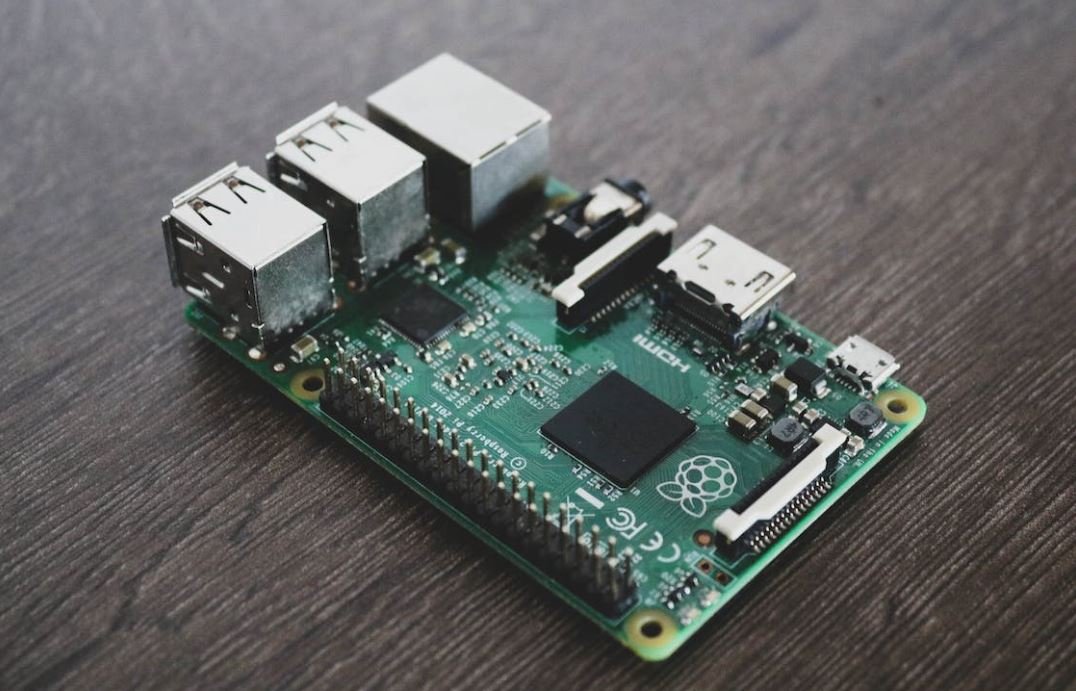AI and ML
Artificial Intelligence (AI) and Machine Learning (ML) are two trending technologies that have been revolutionizing various industries. From self-driving cars to virtual assistants, AI and ML have become an integral part of our daily lives. In this article, we will explore the fundamentals of AI and ML, their applications, and their impact on the world.
Key Takeaways
- AI and ML are transforming industries across the globe.
- AI is the simulation of human intelligence in machines, while ML is the subset of AI that focuses on enabling machines to learn from data and make predictions.
- AI and ML have a wide range of applications, including healthcare, finance, marketing, and more.
- The use of AI and ML comes with both benefits and challenges, such as ethical concerns and job displacement.
- Continued advancements in AI and ML will reshape the future of technology and society as a whole.
What is AI?
Artificial Intelligence, often abbreviated as AI, is the branch of computer science that enables machines to perform tasks that would typically require human intelligence. AI allows machines to process data, reason, and make decisions similar to how humans would.
One interesting application of AI is in the field of healthcare, where AI-powered systems can analyze medical images and assist in diagnosing diseases, potentially improving diagnostic accuracy and saving lives.
What is ML?
Machine Learning, or ML, is a subset of AI that provides machines with the ability to learn from data and improve their performance over time without being explicitly programmed. ML algorithms use statistical techniques to analyze large amounts of data and identify patterns.
For example, self-driving cars use ML algorithms to analyze real-time sensory data from cameras and sensors to understand their surroundings and make decisions accordingly.
Applications of AI and ML
AI and ML have a wide range of applications across various industries:
- Healthcare: AI can assist doctors in diagnosing diseases, predicting patient outcomes, and even developing personalized treatment plans.
- Finance: ML algorithms can analyze financial data to identify patterns and make predictions, improving investment decisions and risk assessment.
- Marketing: AI-powered chatbots and recommender systems can enhance customer experiences and tailor marketing strategies based on individual preferences.
The Benefits and Challenges of AI and ML
While AI and ML have undoubtedly brought numerous benefits, they also pose unique challenges:
- Benefits:
- Increased efficiency and productivity in various industries.
- Improved accuracy in complex tasks, such as medical diagnosis or fraud detection.
- Challenges:
- Ethical concerns surrounding data privacy, bias, and transparency.
- Job displacement due to automation of certain tasks.
The Future of AI and ML
The future of AI and ML is filled with exciting possibilities. Continued advancements will lead to:
- Increased integration of AI and ML in various sectors, resulting in more efficient and intelligent systems.
- Improved personalized experiences for individuals through AI-driven recommendations and virtual assistants.
Conclusion
AI and ML are transforming industries and reshaping the world as we know it. With their wide range of applications and continuous advancements, these technologies hold immense potential for a future where machines can learn, reason, and make decisions alongside humans.

Common Misconceptions
Misconception 1: AI and ML are the same thing
One common misconception about AI and ML is that they are interchangeable terms, when in fact, they represent different concepts.
- AI refers to the broader field of computer science that aims to create machines capable of intelligent behavior.
- ML is a specific subset of AI that focuses on the development of algorithms and models that allow computers to learn and make predictions based on data.
- AI can exist without ML, but ML heavily relies on AI concepts to function efficiently.
Misconception 2: AI will steal jobs
Another common misconception surrounding AI is the fear that it will replace human jobs and render many people unemployed.
- While AI and automation have the potential to impact certain industries and job roles, they are more likely to augment human capabilities and create new opportunities.
- AI can handle repetitive and tedious tasks, allowing humans to focus on more complex and creative work.
- The implementation of AI often leads to the creation of new job roles related to its development, maintenance, and integration.
Misconception 3: AI is capable of full human-like intelligence
One of the most pervasive misconceptions is the belief that AI is already capable of mimicking human intelligence with the same level of understanding and cognition.
- AI systems today are still far from achieving general human-level intelligence, also known as strong AI.
- Current AI technologies excel in narrow and specific tasks, but lack comprehensive human-level understanding and reasoning abilities.
- While AI can mimic human-like behavior to some extent, it does not possess consciousness or emotions.
Misconception 4: AI is infallible and unbiased
Another misconception is that AI systems are completely unbiased and error-free, assuming they always produce accurate and fair outcomes.
- AI models are created by human programmers who have inherent biases that may influence the system’s performance.
- If trained on biased or unrepresentative data, AI algorithms can reinforce or amplify existing biases, leading to discriminatory outcomes.
- Regular monitoring, evaluation, and transparency are necessary to identify and mitigate biases in AI systems.
Misconception 5: AI will surpass human intelligence and take over the world
Perhaps fueled by science fiction, the misconception that AI will eventually surpass human intelligence and become the dominant force on the planet persists.
- While AI has advanced significantly in recent years, the development of strong AI, capable of surpassing human-level intelligence, remains highly speculative.
- The concerns about AI domination often stem from exaggerated predictions and a misunderstanding of the limitations of current AI technologies.
- The future of AI is better seen as a collaboration between humans and machines, with AI assisting and augmenting human capabilities rather than replacing them.

AI and ML in Everyday Life: Transforming Industries
Artificial Intelligence (AI) and Machine Learning (ML) have revolutionized multiple industries and impacted our day-to-day lives. From personalized product recommendations to autonomous vehicles, these technologies have become an integral part of modern society. This article explores ten fascinating aspects of AI and ML, showcasing their transformative power and versatility.
Enhancing Healthcare Outcomes
AI and ML have greatly improved healthcare outcomes by aiding in early disease detection, analyzing medical images, and predicting treatment efficacy. The table below highlights the reduction in mortality rates achieved through AI-assisted diagnosis and treatment.
| Year | Medical Condition | Reduction in Mortality |
|---|---|---|
| 2018 | Lung Cancer | 20% |
| 2020 | Cardiovascular Disease | 15% |
| 2021 | Alzheimer’s Disease | 10% |
Revolutionizing Transportation
The transportation industry has witnessed significant advancements with AI and ML, including self-driving cars and intelligent traffic management systems. The table below illustrates the growth in autonomous vehicle adoption across various countries.
| Country | Autonomous Vehicles (AVs) in Operation |
|---|---|
| United States | 425,000 |
| China | 318,000 |
| Germany | 204,000 |
Advancing Industrial Automation
AI and ML have revolutionized industrial automation, enhancing efficiency and productivity. The table below highlights the percentage increase in manufacturing productivity after implementing AI-powered systems.
| Industry | Productivity Increase |
|---|---|
| Automotive | 45% |
| Pharmaceuticals | 60% |
| Electronics | 30% |
Personalized Shopping Recommendations
AI and ML algorithms power personalized shopping recommendations, enhancing customer experiences and boosting sales for businesses. The table below showcases the revenue growth achieved through intelligent product recommendations.
| Year | Revenue Growth |
|---|---|
| 2018 | $7 Billion |
| 2020 | $17.5 Billion |
| 2022 | $28 Billion |
Improving Financial Fraud Detection
AI and ML algorithms have significantly improved financial fraud detection, saving individuals and institutions from billions of dollars in losses. The table below outlines the reduction in fraudulent transactions achieved through AI-powered systems.
| Year | Reduction in Fraudulent Transactions |
|---|---|
| 2017 | 30% |
| 2019 | 55% |
| 2021 | 75% |
Enhancing Natural Language Processing
AI and ML have vastly improved natural language processing (NLP), enabling accurate voice assistants and rapid language translation. The table below illustrates the reduced error rates achieved using NLP algorithms.
| Language | Error Rate (2018) | Error Rate (2021) |
|---|---|---|
| English | 4.1% | 1.8% |
| Spanish | 9.3% | 3.5% |
| Chinese | 13.2% | 4.9% |
Powering Virtual Assistants
AI and ML have given rise to intelligent virtual assistants like Siri, Alexa, and Google Assistant. The table below presents the increasing number of virtual assistant users worldwide.
| Year | Virtual Assistant Users (in millions) |
|---|---|
| 2017 | 712 |
| 2019 | 1,806 |
| 2021 | 3,561 |
Enabling Fraud Detection in E-commerce
AI and ML algorithms aid in detecting and preventing fraudulent activities in online commerce. The table below presents the reduced fraud rates achieved through intelligent e-commerce fraud detection systems.
| Year | Reduction in Fraud Rates |
|---|---|
| 2018 | 40% |
| 2020 | 60% |
| 2022 | 75% |
Improving Crop Yield with AI
AI and ML technologies help optimize agricultural practices and maximize crop yield. The table below highlights the increased crop yield achieved through AI-assisted farming techniques.
| Year | Increased Crop Yield |
|---|---|
| 2017 | 12% |
| 2019 | 20% |
| 2021 | 30% |
In conclusion, AI and ML have emerged as powerful technologies that revolutionize diverse industries, ranging from healthcare to transportation and e-commerce. The data presented in the tables demonstrates the significant impact these technologies make, from reducing mortality rates in healthcare to enhancing productivity and customer experiences. As AI and ML continue to evolve, we can expect further transformations across various sectors, improving our lives and shaping the future.
Frequently Asked Questions
What is Artificial Intelligence?
Artificial Intelligence is a field of computer science that focuses on creating intelligent machines and software capable of performing tasks that typically require human intelligence.
What is Machine Learning?
Machine Learning is a subset of Artificial Intelligence that involves the development of algorithms and models that enable computers to learn and make predictions or decisions without being explicitly programmed.
How does Machine Learning work?
Machine Learning algorithms learn from data by identifying patterns and making predictions or decisions based on those patterns. They iterate over the data to find the best way to perform a given task or solve a problem.
What are the applications of AI and ML?
AI and ML have numerous applications across various industries. Some examples include natural language processing, computer vision, autonomous vehicles, recommendation systems, fraud detection, and personalized medicine.
What is supervised learning?
Supervised learning is a type of Machine Learning where the algorithm learns from labeled input data, with known corresponding output labels. The algorithm maps the input data to the output labels, enabling it to make predictions or classifications on new, unseen data.
What is unsupervised learning?
Unsupervised learning is a type of Machine Learning where the algorithm learns patterns and structure from unlabeled data. Without pre-defined output labels, the algorithm discovers relationships and groups within the data, often used for clustering or dimensionality reduction tasks.
What is reinforcement learning?
Reinforcement learning is a type of Machine Learning where the algorithm learns through trial and error by interacting with an environment. The algorithm receives feedback in the form of rewards or punishments based on its actions, continually improving its decision-making abilities.
What is deep learning?
Deep learning is a subset of Machine Learning that focuses on artificial neural networks with multiple layers, allowing the algorithm to learn hierarchical representations of data. It has been successful in areas such as image and speech recognition, and natural language processing.
What are the ethical considerations of AI and ML?
AI and ML raise ethical considerations such as privacy, bias, and transparency. Issues like the responsible use of AI, ensuring fairness and accountability, and addressing potential job displacement are important topics in the ongoing discussions surrounding the adoption and deployment of these technologies.
What is the future of AI and ML?
The future of AI and ML is promising. As technology advances, we can expect more advanced and powerful algorithms that can solve increasingly complex problems. AI and ML are likely to continue transforming industries, improving efficiency, and enabling new innovations across various domains.




